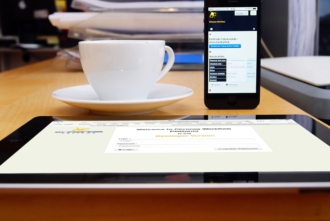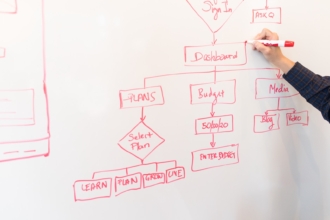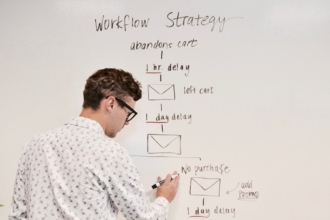Every business has workflows, even if they aren’t formalized. Every process, from how payments are issued to vendors to how employees are onboarded, is a workflow. There is a defined beginning, such as when an employee submits receipts for reimbursement, that sets in motion a process to achieve a specific result.
Many organizations establish formal workflows to track and manage these processes. Though many smaller organizations don’t formalize workflows, they nonetheless have plenty of them.
Here are five workflow examples that can be formalized and streamlined to create more efficiency in your workday.
5 workflow examples
- Employee hiring workflows
- Customer onboarding workflow
- Content creation workflow
- Expense reimbursement workflow
- Vacation approval workflow
Employee hiring workflows
- Create a requisition for a new hire.
- Post the job description on the company website and recruiting sites such as Indeed.com.
- Identify resumes that match enough of the qualifications you seek.
- Human resources contacts the selected candidates to set up phone screenings.
- Candidates who do well on the phone interview are scheduled for interviews with the manager and team they would work with.
- The manager and team meet to discuss the candidates and determine who’s the best fit.
- HR makes an offer to the selected candidate.
- When the offer is accepted, a start date is set.
- The candidate meets with HR to sign the W-2 form and complete other required paperwork.
- Enter the employee’s tax and personal information into the applicable systems.
- Submit an IT request to issue the employee a new login and any needed equipment.
- Schedule the employee’s orientation.
- Schedule and complete all required training.
Customer onboarding workflow
- Customers sign up for your product.
- They receive a welcome email with links to product tutorials.
- Customers receive reminder emails until they begin using the product.
- If a customer doesn’t use the product within a certain number of days, they receive an email directly from a representative.
- After a customer successfully signs in, they continue to receive tutorials via email for the features they use most.
Content creation workflow
- A salesperson requests a particular sort of content, like a data sheet for a new product.
- A writer and graphic designer are assigned the project.
- The writer turns in a first draft to an editor.
- The draft is returned with edits.
- The writer makes the edits, and the edits are approved.
- The graphic designer submits graphics.
- The designed piece is reviewed.
- The approved content is sent to the sales team so they can share it with prospects and customers.
Expense reimbursement workflow
- An employee submits an expense report with receipts.
- The employee’s manager reviews the expense report.
- After approving the report, the manager submits it to payroll for reimbursement.
Vacation approval workflow
- The employee requests vacation time for specific dates.
- The manager approves those dates.
- Vacation time is noted in the employee’s file, per the company’s policy.
- If the vacation time isn’t approved, the employee can request vacation on different dates.
Hiring an employee, from recruiting to onboarding, is a workflow comprised of a sequence of distinct workflows, one after the other — recruiting candidates, screening the candidates, selecting one, and so on until the new hire is onboarded. Documenting each of these smaller workflows is the first step to making the process a seamless workflow.
The job applicant workflow can go like this:
This triggers the employee screening workflow:
The steps required to complete the hiring workflow make up the onboarding workflow:
Your customer onboarding workflow influences how happy a new customer will be with your product or service. A new customer deserves to know you value their business. Here’s a potential customer onboarding workflow for a software product:
Creating sales materials, blog posts, videos, and every other kind of content requires a process. That workflow example might look like this:
Employee expense reimbursement is a pretty common workflow in most organizations. It usually looks like this:
Vacation approval is a simple workflow that can be boiled down to these steps:
These examples are all of recurring workflows, but they always require managers to make decisions. Documenting these recurring workflows is a good starting point when you begin the task of making your organization more efficient.













Send Comment:
1 Comments:
More than a year ago
What would be better is to literally have workflow pages we can go through as a test to see your best recommendations on style. This isn't what I was looking for in terms of an example, more the UX.